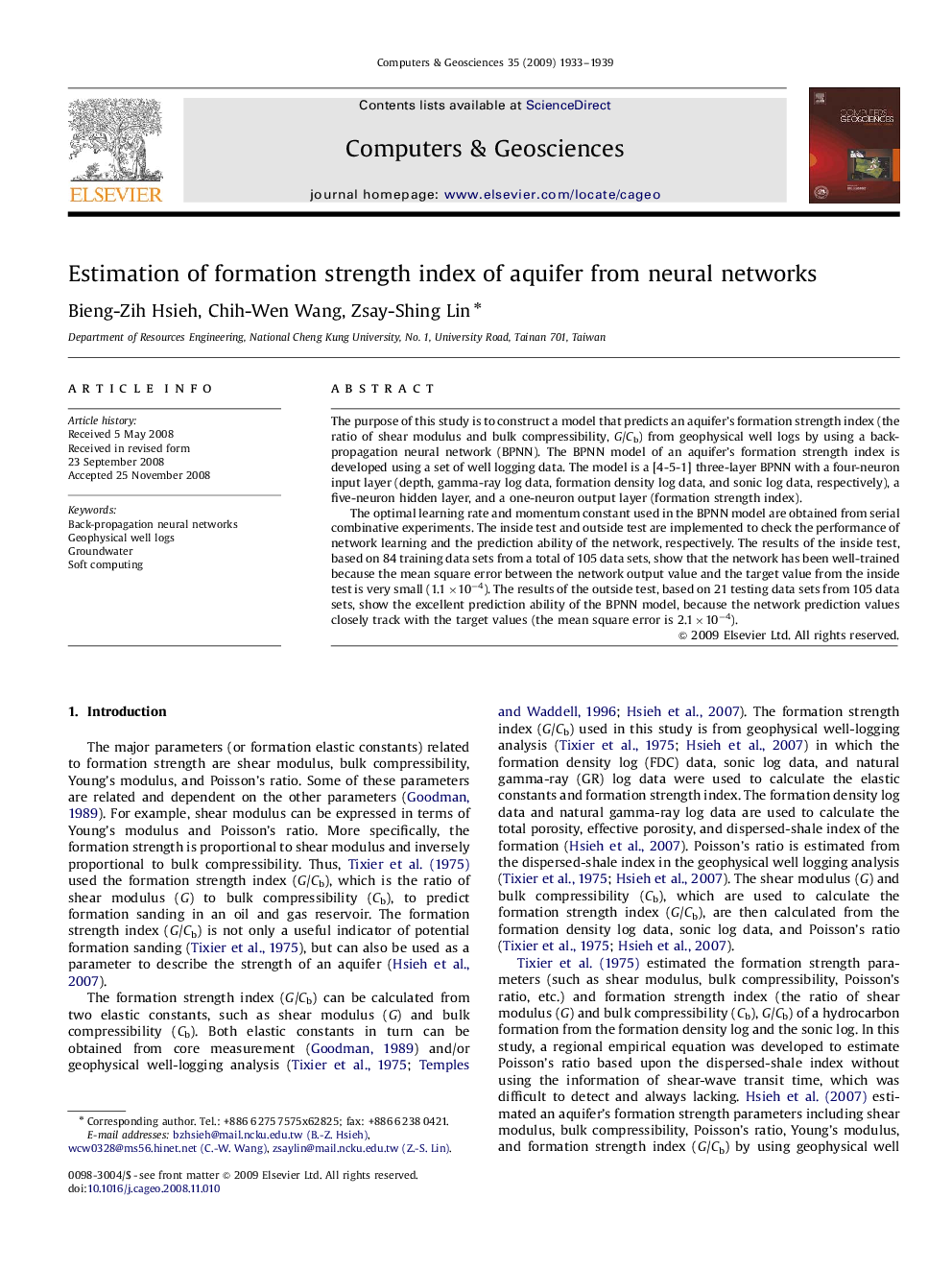| Article ID | Journal | Published Year | Pages | File Type |
|---|---|---|---|---|
| 508420 | Computers & Geosciences | 2009 | 7 Pages |
The purpose of this study is to construct a model that predicts an aquifer's formation strength index (the ratio of shear modulus and bulk compressibility, G/Cb) from geophysical well logs by using a back-propagation neural network (BPNN). The BPNN model of an aquifer's formation strength index is developed using a set of well logging data. The model is a [4-5-1] three-layer BPNN with a four-neuron input layer (depth, gamma-ray log data, formation density log data, and sonic log data, respectively), a five-neuron hidden layer, and a one-neuron output layer (formation strength index).The optimal learning rate and momentum constant used in the BPNN model are obtained from serial combinative experiments. The inside test and outside test are implemented to check the performance of network learning and the prediction ability of the network, respectively. The results of the inside test, based on 84 training data sets from a total of 105 data sets, show that the network has been well-trained because the mean square error between the network output value and the target value from the inside test is very small (1.1×10−4). The results of the outside test, based on 21 testing data sets from 105 data sets, show the excellent prediction ability of the BPNN model, because the network prediction values closely track with the target values (the mean square error is 2.1×10−4).
